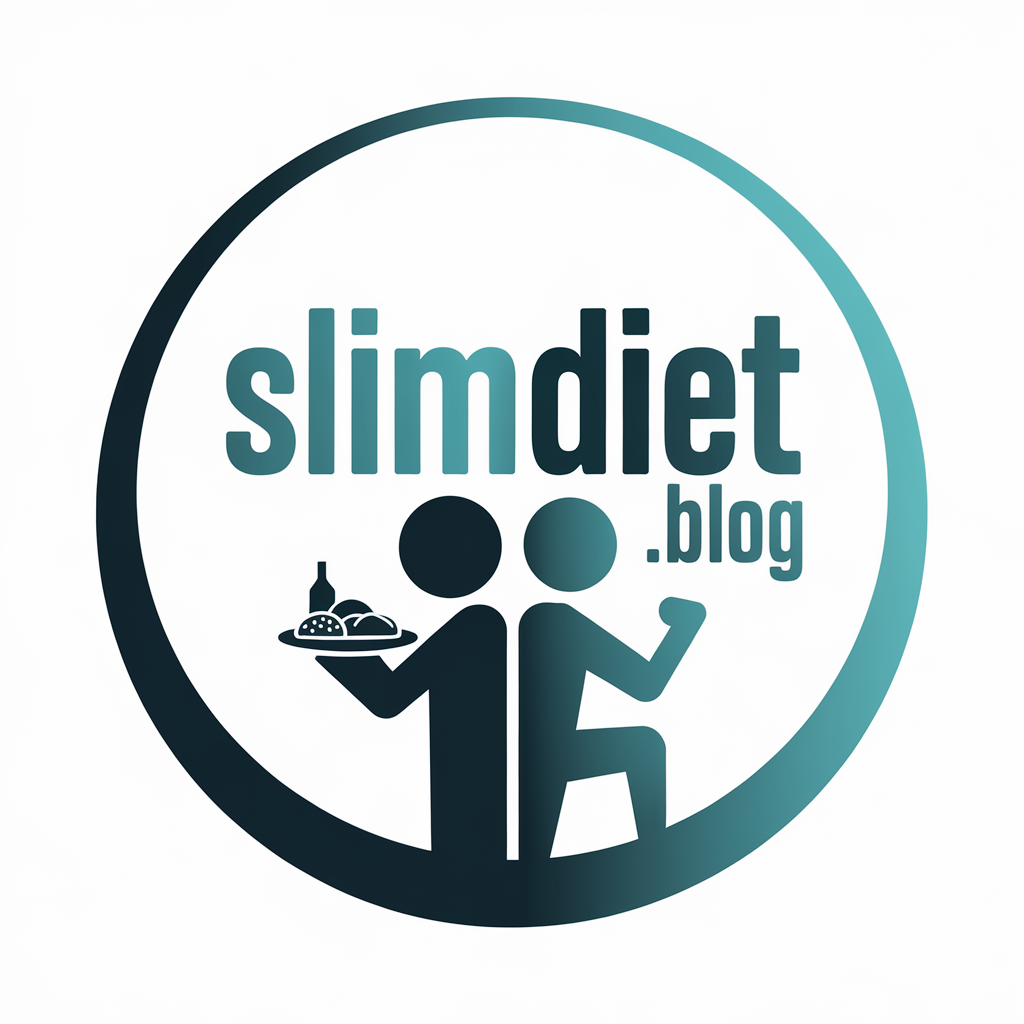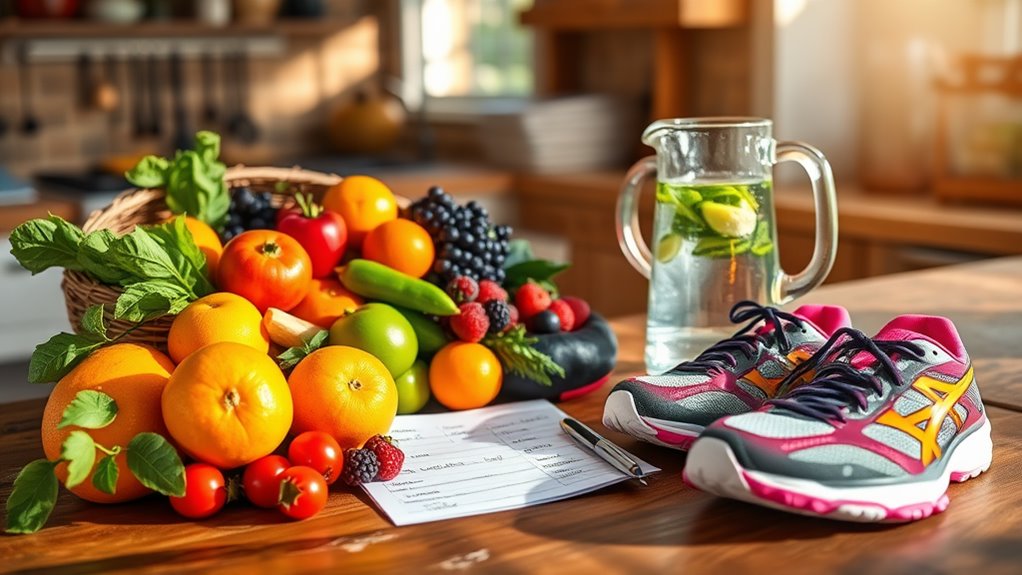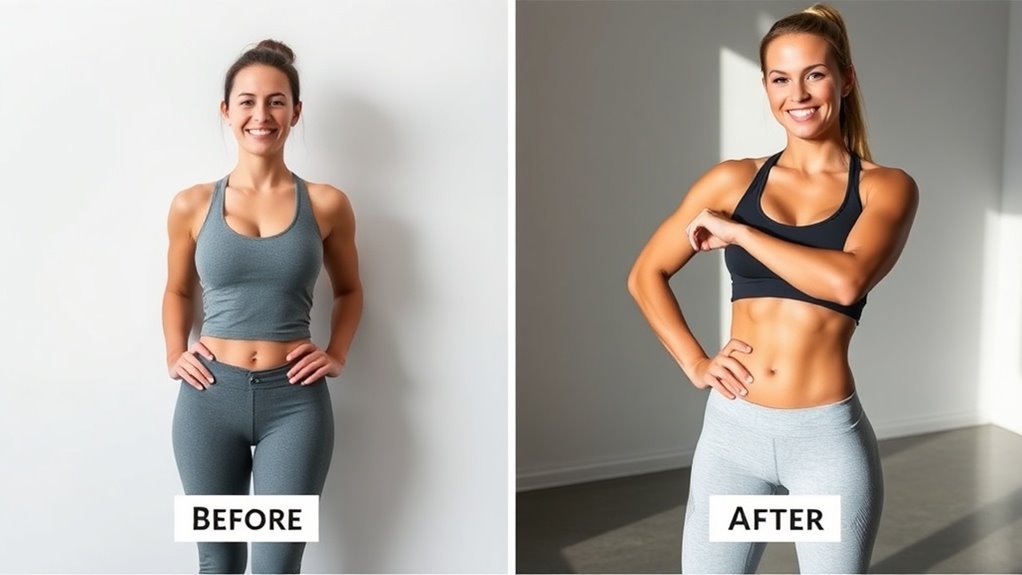How I Dropped 15 Pounds in a Month (No Gym Required!)
You can drop 15 pounds in a month without hitting the gym by setting realistic goals and creating a caloric deficit. Track what you eat and plan your meals to stay organized. Focus on whole foods and drink plenty of water to stay hydrated. Building a support system with friends or family keeps you motivated. Lastly, manage stress and practice mindful eating to curb cravings. Keep going to discover more tips for your journey!
Setting Realistic Goals for Weight Loss
When it comes to weight loss, setting realistic goals is crucial for your success. If you want to lose 15 pounds without a gym, start by breaking down that goal into smaller, manageable milestones. Instead of focusing solely on the end result, aim for losing 1-2 pounds per week. This approach makes your journey feel more achievable and keeps you motivated.
Consider adopting healthier eating habits, like incorporating more fruits and vegetables into your meals. You might also explore fun activities, like walking or home workouts, that fit your lifestyle. Remember that managing caloric intake is essential for effective fat loss, and small changes in your diet can lead to significant results.
Share your goals with friends or family; having a support system helps create a sense of belonging and accountability.
Understanding Caloric Deficit
To effectively lose weight, you need to understand the concept of caloric deficit, which means consuming fewer calories than your body burns.
It’s a simple yet powerful strategy that helps you shed those extra pounds. Here’s how you can create a caloric deficit in your daily routine:
-
Track Your Intake: Keep a food diary or use an app to monitor your calorie consumption. This awareness helps you make better choices.
-
Increase Your Activity: Incorporate more movement into your day, like walking or engaging in active hobbies. Every bit counts!
-
Make Smart Food Choices****: Opt for nutrient-dense foods that fill you up without packing in extra calories. Think fruits, veggies, and lean proteins. Additionally, practicing mindful eating enhances your connection with food, leading to better choices and satisfaction.
Meal Planning for Success
Meal planning can be a game-changer in your weight loss journey, as it helps you stay organized and commit to healthier eating habits. By dedicating a little time each week to plan your meals, you’re setting yourself up for success.
Start by choosing a day to map out your week. Think about what you want to eat and make a grocery list to keep you focused.
Don’t stress about being perfect; it’s all about finding what works for you. Prepare simple, balanced meals that you genuinely enjoy. This way, you won’t feel deprived, and you’ll be more likely to stick with it. Meal planning not only saves time but also reduces stress associated with meal decisions, making it easier to maintain your healthy eating habits.
Incorporate variety to keep things exciting, and don’t forget about snacks! Having healthy options ready to grab will prevent last-minute choices that derail your progress.
Incorporating More Whole Foods
Incorporating more whole foods into your diet can significantly enhance your weight loss efforts and overall health. Whole foods are packed with nutrients, keeping you full and satisfied while reducing cravings for processed snacks.
Plus, you’ll feel more energized and connected to your meals. Here are three simple ways to start:
-
Shop the perimeter: Most grocery stores have fresh produce, meats, and dairy around the edges. Stick to these sections to fill your cart with whole foods.
-
Cook at home: Preparing meals yourself lets you control ingredients. Try making dishes with whole grains, vegetables, and lean proteins.
-
Experiment with fruits and veggies: Incorporate a variety of colorful fruits and vegetables into your meals. They’re not only nutritious but also bring flavor and excitement to your plate. Additionally, choosing whole grains can help regulate blood sugar levels and reduce cravings for unhealthy snacks.
Hydration: The Unsung Hero
While filling your plate with whole foods is a fantastic step towards better health, don’t overlook the importance of staying hydrated. Drinking enough water can boost your metabolism, improve digestion, and even help curb those pesky cravings. Plus, it’s an easy habit to adopt! Proper hydration also supports fat burning and enhances workout performance, allowing for more calorie burn.
Here’s a quick look at hydration benefits:
| Benefit | Description |
|---|---|
| Metabolism Boost | Water increases calorie burning. |
| Appetite Control | Staying hydrated helps manage hunger. |
| Enhanced Performance | Proper hydration improves energy levels. |
Aim for at least eight glasses a day. You can get creative too—infuse your water with fruits or herbs for added flavor. By prioritizing hydration, you’re not just quenching your thirst; you’re building a foundation for your weight loss journey. You’ve got this, and we’re all in it together!
The Power of Portion Control
Portion control can be a game changer in your weight loss journey. It’s about enjoying your favorite foods while keeping your intake in check. You don’t have to feel deprived; instead, focus on mindful eating.
Here are three simple strategies to help you master portion control:
-
Use Smaller Plates****: By serving your meals on smaller dishes, you’ll naturally reduce your portion sizes without feeling like you’re missing out.
-
Pre-portion Snacks: Grab small bags or containers to divide snacks into single servings. This way, you’ll avoid mindless munching straight from the bag.
-
Listen to Your Body: Tune in to your hunger cues. Eat slowly and stop when you’re satisfied, not stuffed.
Creative Cooking at Home
Finding joy in your meals can make a significant difference in your weight loss journey. Cooking at home offers you a chance to experiment with flavors and ingredients that resonate with you.
Why not try swapping out high-calorie ingredients for healthier options? For instance, use Greek yogurt instead of sour cream or spiralized veggies in place of pasta.
Invite friends or family to join you in the kitchen. Cooking together fosters connection and can make meal prep feel less like a chore.
Share your culinary creations on social media or with a group of friends who are also on their health journeys. This sense of community can inspire you to keep pushing forward.
Lastly, don’t forget the importance of presentation. A colorful plate can make a simple meal feel special, encouraging you to savor each bite.
Enjoy the process, and let your creativity shine!
Discovering Fun Home Workouts
Whether you’re a fitness enthusiast or just starting out, discovering fun home workouts can transform your routine into an enjoyable experience.
It’s all about finding activities that excite you and make you feel connected. Here are three ideas to get you started:
-
Dance Party: Put on your favorite playlist and dance like nobody’s watching. It’s a fantastic way to elevate your heart rate while having a blast.
-
Online Classes: Explore platforms offering free or low-cost workout videos. From yoga to kickboxing, you’ll find a community that inspires you to keep moving.
-
Family Challenges: Involve your loved ones in a friendly competition. Set up mini-challenges like obstacle courses or relay races in your backyard.
Embracing these fun workouts not only helps you shed pounds but also fosters a sense of belonging and joy in your fitness journey.
Get moving and enjoy the process!
Utilizing Bodyweight Exercises
Home workouts can be both fun and effective, especially when you incorporate bodyweight exercises into your routine. These exercises don’t require fancy equipment, making them perfect for any space. You can start with basics like push-ups, squats, and lunges. They work your muscles and boost your heart rate, giving you a full-body workout in no time.
What’s great is you can challenge yourself by increasing reps or trying variations as you get stronger. Plus, you can easily involve friends or family for some added motivation. Imagine everyone cheering each other on during a quick circuit!
Don’t forget to mix in planks or burpees for an extra challenge. The best part? You might just find a sense of community by sharing your progress with others.
The Importance of Consistency
While it might be tempting to dive into an intense workout plan or diet for quick results, consistency is key to achieving lasting change.
You’ll find that sticking to a routine not only helps you shed pounds but also builds healthy habits that last a lifetime.
Here are three important reasons to stay consistent:
-
Habit Formation: Regularly practicing healthy behaviors makes them second nature, reducing the effort needed to maintain your progress.
-
Sustainable Results: Quick fixes often lead to temporary results. By being consistent, you’re more likely to keep the weight off and feel better overall.
-
Community Support: Sharing your journey with others creates a sense of belonging and accountability, making it easier to stay committed.
Tracking Progress and Staying Motivated
Tracking your progress is essential for staying motivated on your weight loss journey. By recording your daily meals, workouts, and feelings, you create a clear picture of your efforts and achievements. Use a journal or an app—whichever feels right for you.
Celebrate small victories, like losing a pound or fitting into your favorite jeans again. It’s normal to have ups and downs, but keeping track helps you see how far you’ve come. When you hit a plateau, remind yourself of your past successes to reignite your motivation.
Connecting with others on similar journeys can amplify this effect. Share your updates, seek advice, and offer encouragement to each other.
Building a Support System
Having a strong support system can make a significant difference in your weight loss journey. Surrounding yourself with people who understand your goals and challenges not only keeps you motivated but also fosters a sense of belonging.
Here are three ways to build that support system:
-
Find a Buddy: Partner with a friend or family member who shares similar goals. You can encourage each other, share recipes, and celebrate milestones together.
-
Join a Community: Look for online forums or local groups focused on weight loss. Connecting with others going through the same process can provide valuable insights and friendship.
-
Share Your Goals: Don’t hesitate to communicate your goals with those close to you. When they know what you’re working toward, they can cheer you on and hold you accountable.
With encouragement and camaraderie, your journey will feel less daunting and more enjoyable!
Managing Stress and Emotional Eating
As you navigate your weight loss journey, managing stress and emotional eating can be crucial to your success. It’s easy to turn to comfort food when life gets overwhelming, but recognizing these triggers is the first step. When you feel stress creeping in, pause and ask yourself if you’re truly hungry or just seeking solace in food.
Building healthier coping mechanisms can make a big difference. Instead of reaching for snacks, try going for a walk, journaling, or chatting with a friend. These activities not only distract you but also foster a sense of connection and support.
Creating a mindful eating practice can help you tune into your body’s signals. Savor each bite and listen to your cravings.
Prioritizing Sleep for Weight Loss
While you might focus on diet and exercise in your weight loss journey, prioritizing sleep is just as essential.
Quality sleep plays a crucial role in regulating your metabolism and hormone levels, helping you shed those extra pounds.
Here are three ways to ensure you get the sleep you need:
-
Establish a Sleep Schedule****: Go to bed and wake up at the same time every day to regulate your body’s internal clock.
-
Create a Restful Environment*: Make your bedroom dark, quiet, and cool to *promote deeper sleep. Consider using blackout curtains or white noise machines.
-
Limit Screen Time Before Bed: Reduce exposure to screens at least an hour before sleep. The blue light can interfere with your body’s natural sleep signals.
Celebrating Small Victories Along the Way
Celebrating small victories along your weight loss journey can make a significant difference in your motivation and mindset. Each time you resist a sugary treat or choose a healthy meal, give yourself a mental high-five. These moments add up and remind you that progress isn’t always about the scale.
Maybe you fit into a pair of jeans you thought you’d never wear again, or perhaps you nailed your water intake for the week. Acknowledge these achievements!
Share them with friends, family, or a supportive online community. You’ll find that others are on similar paths and can relate to your wins. This sense of belonging fuels your journey, making it feel less lonely.
Keep a journal to jot down these victories, big or small. They serve as powerful reminders of how far you’ve come, inspiring you to keep going. Remember, every step counts! Celebrate yourself—you deserve it!





